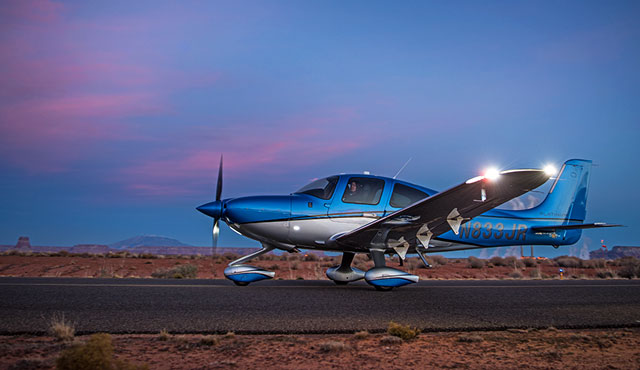
According to the FAA, 5 to 10% of all general aviation accidents can be attributed to spatial disorientation, and 90% of these types of accidents are fatal. Spatial disorientation often occurs during flight because humans are genetically designed to maintain spatial orientation on the ground.
When we’re in the air, our bodies create sensory conflicts in the unfamiliar environment, which are heightened even further during nighttime. Luckily, there are ways to mitigate the effects of spatial disorientation and prevent dangerous accidents. Here are a few tips for avoiding spatial disorientation during night flight:
The rods in our eyes need about 30 minutes to completely adjust to darkness. Be certain you give your eyes plenty of time to adjust and avoid looking at bright lights before getting in the cockpit. Some pilots wear red-tinted glasses for 20-30 minutes to preserve their natural night vision.
If you haven’t earned your instrument rating, do not attempt visual flight if there’s a possibility of being trapped in inclement weather. If you’re flying at night or in limited visibility, the best way to avoid a dangerous situation is by using your instruments. Earning instrument rating may be challenging, but it can also be an investment in your time and safety.
Bright lights can cause a blinding effect, creating a depth perception issue that makes you feel too low or closer to the runway than you actually are. High Intensity Runway Lighting (HIRL) is helpful for spotting a runway at night in uncontrolled fields. But once you locate the runway, the FAA recommends you lower the light’s intensity to low or medium to avoid a depth perception illusion.
False visual reference illusions can occur when flying at night over a featureless landscape with bright ground lights that look like stars, flying over a banked cloud, or flying on a night with a dark, starless sky. These illusions may trick your brain into seeing a false horizon. To avoid this, use a continuous scan instead of fixating on one object for too long.
According to the FAA, “accidents usually happen as a result of a pilot’s indecision to rely on the instruments.” If you do experience a visual illusion while flying, trust your instruments and overlook the conflicting signals your body may give you. Relying on your experience and instrument training can help keep the skies safe for everyone.